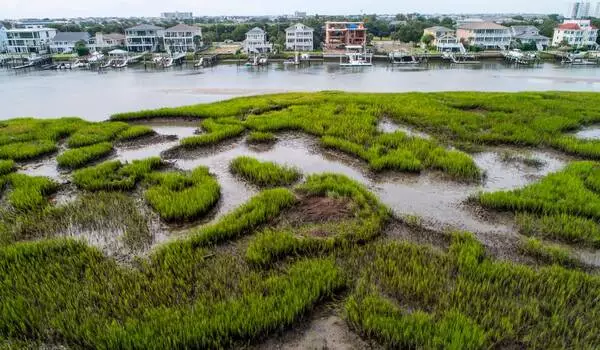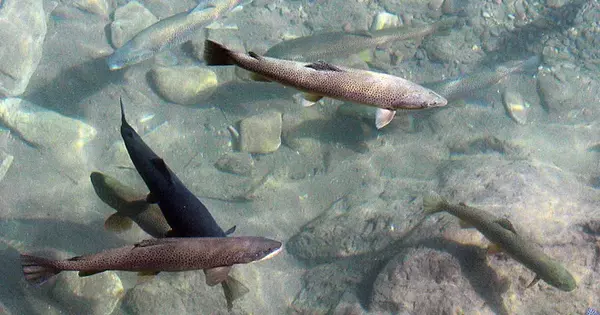Coastal wetlands are not only one of the world’s most valuable ecosystems, but they are also one of the most threatened by high greenhouse gas emissions, which accelerate sea level rise. The extent to which landward migration of wetlands can compensate for seaward wetland losses is hotly debated.
As rising sea levels cause marshes to move inland in six mid-Atlantic states, the coastal zone will no longer serve as a carbon sink, but will instead release more carbon into the atmosphere, according to a new modeling study led by Duke University researchers.
Earlier estimates focused on the potential for a larger area of coastal marshes to capture more carbon, removing it from the atmosphere where it acts as a greenhouse gas in the form of carbon dioxide. However, as coastal marshes invade low-lying forests and freshwater wetlands, the loss of trees and decomposition will release more carbon into the atmosphere than the marshes can capture, contributing to global climate change.
This research and our conversations with states raise a lot of questions about options for managing coastal landscapes given these changes, and emphasizes the importance of reducing greenhouse gases and sea level rise overall, because that’s the main driver of all of this.
Katie Warnell
The research was carried out in collaboration with natural resource agencies in North Carolina, New York, New Jersey, Delaware, Maryland, and Virginia. To aid in coastal planning, maps of predicted changes in coastal habitats and carbon due to sea level rise were created.
“This research and our conversations with states raise a lot of questions about options for managing coastal landscapes given these changes, and emphasizes the importance of reducing greenhouse gases and sea level rise overall, because that’s the main driver of all of this,” said Katie Warnell, lead author of the study and a policy associate at Duke’s Nicholas Institute for Environmental Policy Solutions. “Carbon is only one component of the puzzle. There are numerous other reasons to preserve marshes, including coastal protection and nursery habitat for fisheries. When making decisions about managing our coastal habitats, we must consider all of these different factors.”
The peer-reviewed, open-access study was published in the journal PLOS Climate.

The modeling runs looked at land changes in coastal areas through the year 2104 in scenarios that predict intermediate sea level rise. In 16 out of the 19 runs of the model, inland marsh migration converted land from a net carbon sink to a net carbon source.
“There could be some things done to keep key areas from converting,” Warnell said. “Berms and pumps have been used in North Carolina to protect agricultural land and towns from sea level rise. While these are pricey, they may be worthwhile in some cases.”
Preemptive forest harvesting in vulnerable areas is another option, according to Warnell, to prevent carbon from entering the atmosphere during decomposition. As sea levels rise and saltwater replaces freshwater, trees in low-lying areas die, forming ominous-looking “ghost forests.” The deaths of trees reduce carbon storage while also emitting carbon through decomposition.
“In this new study, Warnell and others have made initial estimates of the carbon costs associated with the drowning and salinization of coastal wetland ecosystems,” said Emily Bernhardt, a professor in Duke’s Nicholas School of the Environment who has extensively studied ghost forests in the eastern United States. “These early estimates suggest that habitat transitions caused by sea-level rise across the Mid Atlantic coastal plain will shift coastal ecosystems from carbon sinks to carbon sources without thoughtful intervention.”
Some coastal wetlands can adapt to rising sea levels through landward migration, in which coastal wetlands move landward into adjacent upslope or upriver ecosystems in response to changing inundation and salinity regimes. The extent to which landward migration can compensate for seaward wetland losses and mitigate biodiversity and ecosystem service loss is a major concern.
















